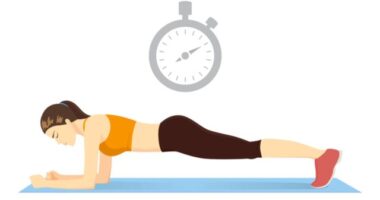
Looking for the best vibrators for beginners can be overwhelming—there’s a truly wild amount of options out there. Vibrators have existed for over a century, but it’s only in the past few decades that they’ve become a widespread, everyday component of human sexuality. Today, 78% of adult women in the U.S. own a vibrator, making it the most popular type of sex toy on the market.
It’s easy to see why: Vibrators can be used either solo or with a partner, are known to increase sexual desire and arousal, and are even a science-backed treatment for various sex-related medical issues. In other words, buying a vibe is a powerful act of self-care.
But how do you shop for a vibrator (and incorporate it into your sex life) if you’ve never tried one before? We’ve got you covered.
How to choose the right type of vibrator for you
“I think a good place to start is to look at what kind of stimulation you already enjoy,” advises Amy Norton, a sex educator and sex toy reviewer. “If you’re into clitoral stimulation, I might suggest something like a bullet vibrator; if you’re more into G-spot stimulation, I might suggest something that’s designed for internal use. If you like both at the same time, that’s where a rabbit vibrator or dual-stimulation vibe can come in handy.” You can assess this by thinking about how you tend to masturbate and/or what aspects of sex you particularly enjoy. Grinding? Oral? Fingering? Penetration? Something else entirely?
The next thing to consider when choosing your first vibrator, Norton says, is whether you’re into broad stimulation or more pinpointed sensations. When you receive oral sex, for example, what tends to feel better for you: a wide, flat tongue pressed against your whole vulva, or the tip of a tongue tracing your clitoris or labia? This distinction can inform whether you’ll go for a big, all-encompassing vibrator, like a wand, or something slimmer, like a bullet.
Intensity of vibrations is also an important factor. It can be hard to know what you need in this regard if you’ve never used a vibrator, but Norton suggests thinking about whether you tend to prefer firm, rough stimulation (say, from a partner’s hand, or your own), or a lighter, gentler touch. If you’re not sure, or if your preferences tend to vary, she recommends getting a vibrator with multiple vibration modes and different speeds, as opposed to a classic two-speed wand (“I like to say that they have two settings: ‘high’ and ‘holy shit,’” Norton says).
READ RELATED: Married At First Sight's Ryan Gallagher reveals why he is quitting alcohol
Another crucial consideration is vibration quality. According to Bex Caputo, a sex educator and former sex toy salesperson, there are two main types of vibration: rumbly and buzzy. Rumbly vibration can be felt more deeply in the body, tends to cause less of the temporary desensitization some people dislike about vibrators, and is usually found in midrange to high-end toys. Buzzy vibration, on the other hand, feels more surface level, is more prone to causing numbness, and is most prevalent in cheaper toys. “If you can get your hands on a toy”—such as at a sex shop—“you can notice whether that sensation feels pleasant on your fingers,” Caputo says. If your fingers start to feel numb, itchy, or uncomfortable just from holding a vibrator while it’s turned on, the vibrations probably won’t feel good on your genitals either.
Lastly, Caputo emphasizes that it’s important to think about how you intend to use your vibrator. For example, if you’re just going to use a toy solo, you may not particularly care if it’s large or has a less-than-sexy aesthetic—but if you plan on incorporating it into partnered sex, you may want it to be slimmer or sleeker. You should also consider whether you’ll have noise constraints to contend with—like a roommate with hypersensitive ears or in-laws occasionally staying in the guest room—in which case, you may prefer to get a quiet vibe.
What you need to know about sex toy safety and hygiene
“Sex toys come in many different materials,” Caputo explains. “Make sure the one you get is non-porous.” Porous materials, like PVC and elastomer, cling onto bacteria and can never be fully cleaned—which, naturally, isn’t ideal for a product you’ll be using on your genitals. Look for vibes made of materials known to be nonporous, such as ABS plastic and medical-grade silicone. These do tend to be slightly more expensive, but then, having recurring vaginal infections can get expensive, too, so you may as well save up for something body-safe.
Another reason to avoid porous materials is that they often contain phthalates, a type of chemical plasticizer associated with cancer, birth defects, and skin irritation, among other things. “There are so many terrible, unsafe toys out there and it makes me very upset,” Norton says, “because they’re so often specifically marketed to beginners who don’t know any better.” When in doubt, do your research, read reviews, and stick to silicone and plastic vibes.
Provided your toy is nonporous, you can clean it between uses with water and a mild soap. It’s easiest to do this if your toy is waterproof. You can also sanitize a nonporous toy by dipping it in a solution of one part bleach to nine parts water, letting it sit for at least 10 minutes, and rinsing it very well. Typically it’s not necessary to sanitize a toy if you’re the only one using it, but you’ll definitely want to do so between uses if you’ll be sharing it with partners or want to use it both anally and vaginally.
With this expert guidance in mind, we’ve rounded up the best vibrators for beginners, below. Happy exploring.
Source: SELF









